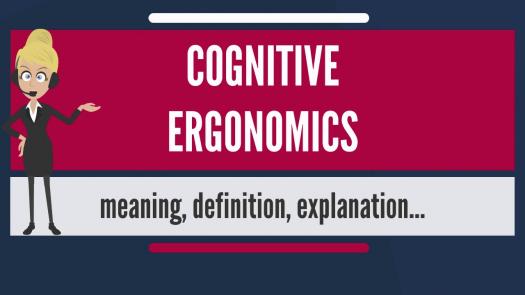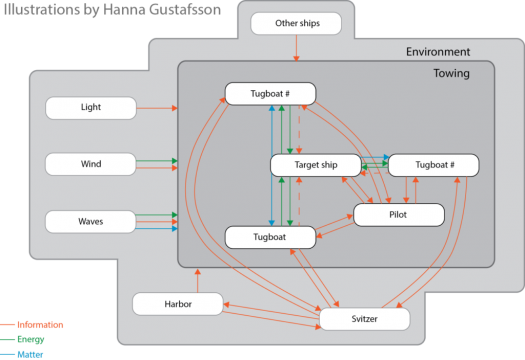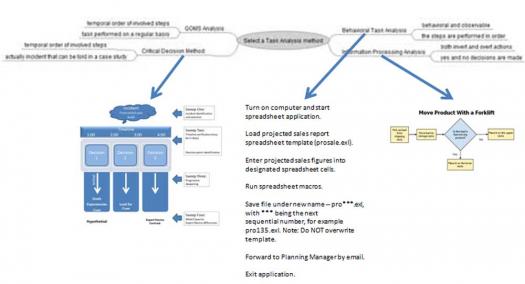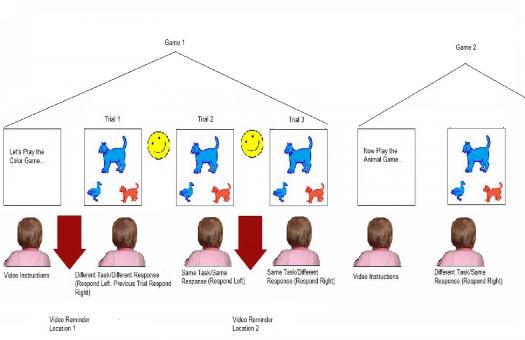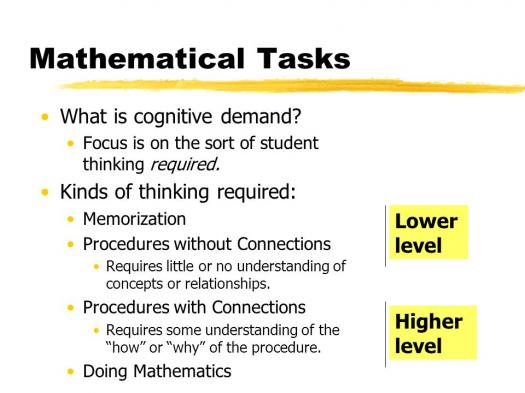Cognitive Ergonomics Quiz

Cognitive ergonomics are concerned with mental processes like perception, memory, reasoning, and motor response. They include mental workload, decision making skilled performance, human-computer interactions, human reliability, work stress and training. Do you think you can recognize most of the facts linked to that field? Take our quiz and see how you perform.
- 1.
What's the purpose of cognitive ergonomics?
- A.
To study the cognition purpose involved with well-being of workers.
- B.
To study operational settings involved with well-being of workers.
- C.
To study cognition in work and operational settings in order to optimize human well-being and system performance.
- D.
To study operational settings involved in system performances.
Correct Answer
C. To study cognition in work and operational settings in order to optimize human well-being and system performance.Explanation
The purpose of cognitive ergonomics is to study cognition in work and operational settings in order to optimize human well-being and system performance. This field focuses on understanding how humans perceive, process, and respond to information in their work environment, with the goal of designing systems and tasks that are compatible with human cognitive abilities. By studying cognitive processes and designing work environments that support optimal cognitive functioning, cognitive ergonomics aims to enhance both the well-being of workers and the overall performance of systems.Rate this question:
-
- 2.
What's the other term for cognitive ergonomics?
- A.
Cognitive engineering.
- B.
Industrial engineering.
- C.
Manual engineering.
- D.
Philosophical screening.
Correct Answer
A. Cognitive engineering.Explanation
Cognitive ergonomics refers to the study of how cognitive processes and mental abilities can be optimized to improve human performance and well-being in relation to technology and work environments. The term "cognitive engineering" is synonymous with cognitive ergonomics as it also focuses on designing systems and interfaces that align with human cognitive abilities and limitations. Industrial engineering, manual engineering, and philosophical screening are not related to the concept of cognitive ergonomics.Rate this question:
-
- 3.
What are the cognitive processes involved with cognitive ergonomics?
- A.
Diagnosis and workload.
- B.
Diagnosis, workload, situation awareness, decision making, planning.
- C.
Situation awareness.
- D.
Decision making and planning.
Correct Answer
B. Diagnosis, workload, situation awareness, decision making, planning.Explanation
The cognitive processes involved with cognitive ergonomics include diagnosis, workload, situation awareness, decision making, and planning. These processes are essential for optimizing human performance and ensuring efficiency in various tasks and activities. Diagnosis involves identifying and understanding problems or issues, while workload refers to the mental and physical demands placed on an individual. Situation awareness involves being aware of one's surroundings and understanding the context of a situation. Decision making and planning are crucial for making informed choices and organizing actions effectively. Overall, these cognitive processes contribute to enhancing performance and promoting human well-being in various ergonomic settings.Rate this question:
-
- 4.
How many main means of interventions are there in cognitive ergonomics?
- A.
4
- B.
3
- C.
5
- D.
6
Correct Answer
A. 4Explanation
There are four main means of interventions in cognitive ergonomics. These interventions focus on improving cognitive processes and performance in various tasks and environments. By implementing these interventions, individuals can enhance their cognitive abilities, such as attention, memory, and decision-making skills. These interventions may include training programs, environmental modifications, technology adaptations, and organizational strategies. Each of these interventions plays a crucial role in optimizing cognitive performance and ensuring a safe and efficient work environment.Rate this question:
-
- 5.
When did this field first emerge?
- A.
In the 50's
- B.
In the 60's
- C.
In the 70's
- D.
In the 80's
Correct Answer
C. In the 70'sExplanation
The field first emerged in the 70's. This implies that the field being referred to was established or began to gain prominence during the 1970s.Rate this question:
-
- 6.
What led to the emergence of this new field?
- A.
The advent of the personal computer.
- B.
Socialism.
- C.
The invention of the apple computer
- D.
Information technology.
Correct Answer
A. The advent of the personal computer.Explanation
The emergence of the new field can be attributed to the advent of the personal computer. With the introduction of personal computers, there was a significant shift in the way people accessed and processed information. This led to the development of new technologies, software, and applications that revolutionized various industries and created the need for professionals in fields like computer science, software engineering, and information technology. The personal computer opened up new possibilities and opportunities, driving the emergence of this new field.Rate this question:
-
- 7.
What's the purpose of neuroergonomics?
- A.
Is to help cure Alzheimer
- B.
It is to help people develop photographic memory.
- C.
It is to enhance human-computer interaction.
- D.
Is to help people keep their focus during a task.
Correct Answer
C. It is to enhance human-computer interaction.Explanation
Neuroergonomics is a field that combines neuroscience and ergonomics to study how the brain interacts with technology and design. Its purpose is to improve and optimize human-computer interaction, making it more efficient, intuitive, and user-friendly. By understanding the neural processes underlying human behavior, neuroergonomics aims to enhance the usability and effectiveness of computer systems, ultimately improving the overall user experience.Rate this question:
-
- 8.
What is cognitive task analysis?
- A.
It is a set of methods used to identify the mental demands and cognitive skills needed to complete a task.
- B.
It's a set of techniques that help remember orders.
- C.
It's a set of techniques used during training.
- D.
It's a set of methods used when maneuvering machinery.
Correct Answer
A. It is a set of methods used to identify the mental demands and cognitive skills needed to complete a task.Explanation
Cognitive task analysis refers to a set of methods that are used to identify the mental demands and cognitive skills required to successfully complete a task. These methods aim to understand the thinking processes and decision-making involved in performing a task effectively. By analyzing the cognitive aspects of a task, it becomes possible to develop training programs, design instructional materials, and improve task performance by focusing on the specific cognitive skills and knowledge that are essential for successful task completion.Rate this question:
-
- 9.
What does GOMS stand for?
- A.
Goals, set of Operators, a set of Methods for achieving the goals, and methods for goals.
- B.
Goals, organizations, methods and methods for goals
- C.
Goals, organization, manufacturing and methods for manufacturing.
- D.
Goals, options, methods and selection of methods.
Correct Answer
A. Goals, set of Operators, a set of Methods for achieving the goals, and methods for goals.Explanation
The correct answer is "Goals, set of Operators, a set of Methods for achieving the goals, and methods for goals." GOMS stands for Goals, Operators, Methods, and Selection rules. This model is used in human-computer interaction to analyze and predict the time it takes for users to complete tasks. The "Goals" refer to the objectives the user wants to achieve, the "Operators" are the basic actions available to the user, the "Methods" are the sequences of operators used to accomplish the goals, and the "Selection rules" determine which methods are chosen in different situations.Rate this question:
-
- 10.
Where are cognitive ergonomics applied?
- A.
Aviation, transportation, the health care system, mobile devices, appliance interface design, product design, and nuclear power plants.
- B.
Aviation and nuclear power plants.
- C.
Transportation.
- D.
Health care system.
Correct Answer
A. Aviation, transportation, the health care system, mobile devices, appliance interface design, product design, and nuclear power plants.Explanation
Cognitive ergonomics is applied in various fields such as aviation, transportation, the health care system, mobile devices, appliance interface design, product design, and nuclear power plants. These fields require the application of cognitive ergonomics principles to ensure that the design of systems, interfaces, and products takes into account human cognitive abilities and limitations. By considering factors such as attention, perception, memory, decision-making, and workload, cognitive ergonomics aims to optimize human performance and enhance safety and efficiency in these domains.Rate this question:
-
Quiz Review Timeline +
Our quizzes are rigorously reviewed, monitored and continuously updated by our expert board to maintain accuracy, relevance, and timeliness.
-
Current Version
-
Mar 21, 2023Quiz Edited by
ProProfs Editorial Team -
Mar 15, 2018Quiz Created by
Anouchka




